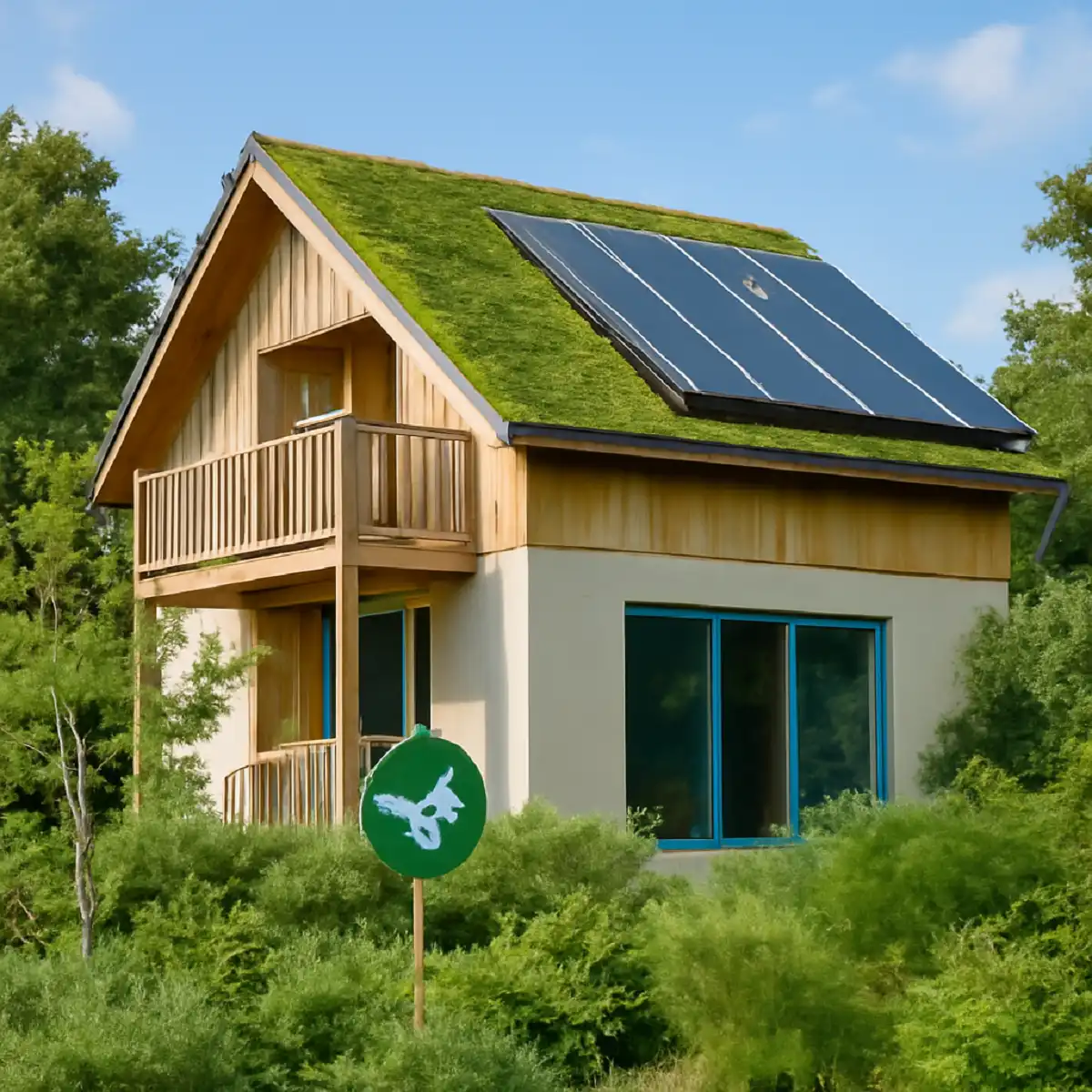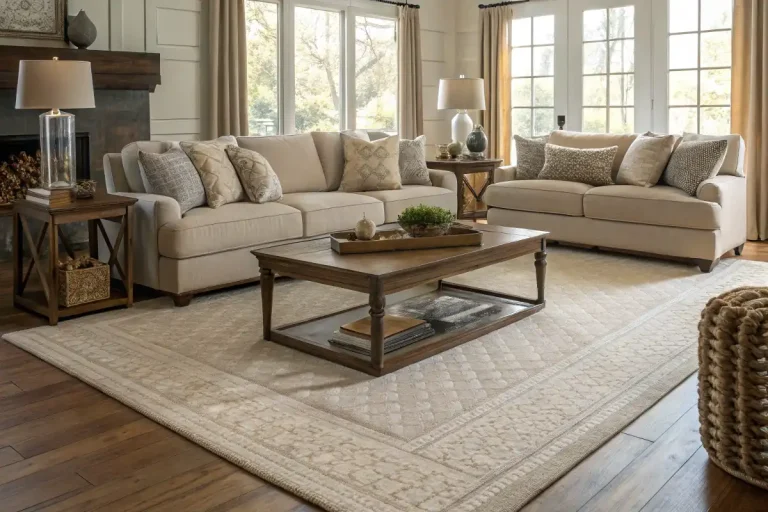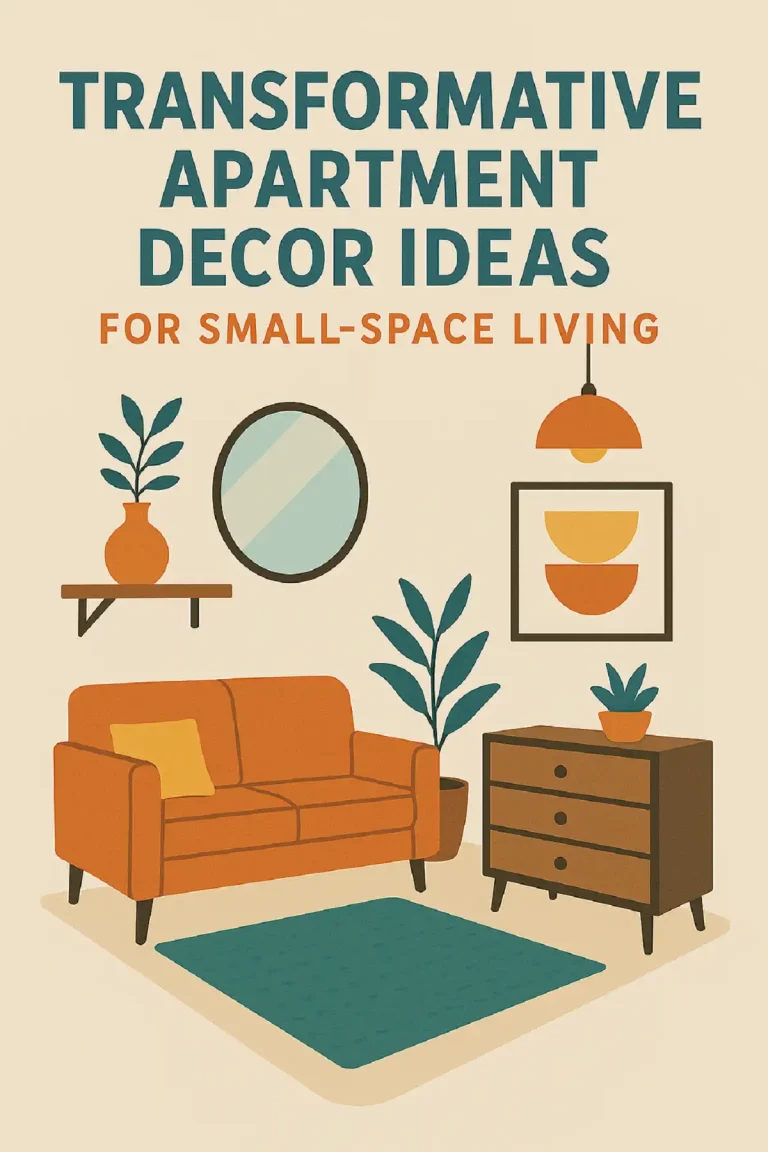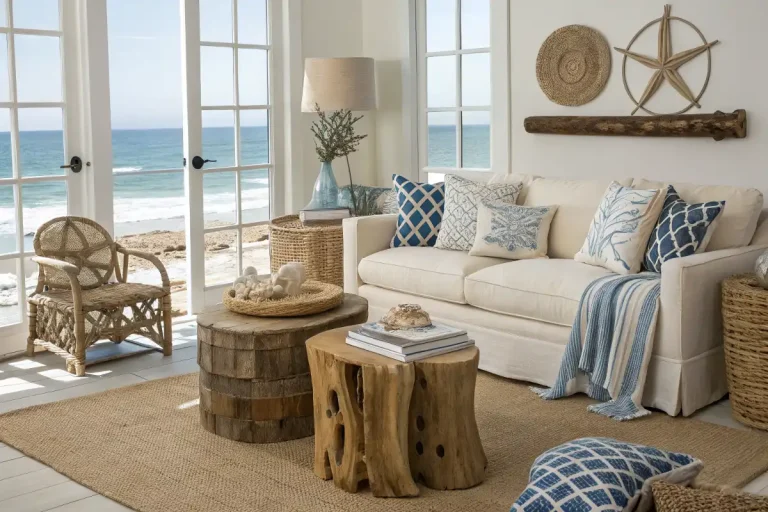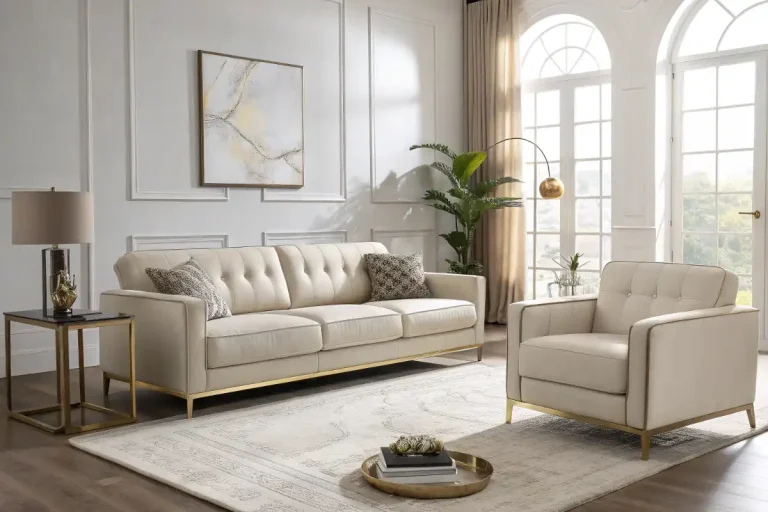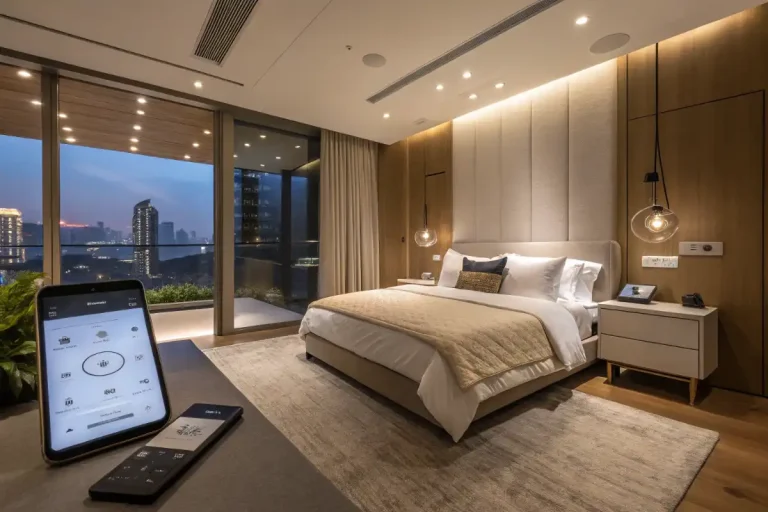Eco-Friendly Home Design, Transforming Spaces Sustainably
Our homes are at an environmental crossroads. In fact, the built environment (homes and buildings) accounts for roughly 34% of global energy demand and 37% of CO₂ emissions worldwide. When we include construction materials and processes, this number rises even higher – over 38% of energy-related CO₂ emissions come from the building and construction sector. In practical terms, every choice we make in renovating a house – from windows to floors – has a climate impact. For example, a typical household saving 10,000 kWh per year of energy can avoid roughly 5–7.5 metric tons of CO₂ emissions.
This isn’t just about big numbers. In the United States (and around the world), homeowners spend millions of dollars each year on heating, cooling, and electric bills. By 2023, global CO₂ emissions hit a record high (37.4 billion tons) and energy demand rose about 2%. Meanwhile, US households alone typically pay thousands of dollars annually in utilities. All of this adds up: upgrading your home with eco-friendly features is now both an environmental necessity and a financial opportunity.
In the European Union, households already consume about 26.2% of all final energy, with natural gas making up nearly 30% of residential energy use. This tells us that simple changes – like improving insulation or switching to renewable energy – can have a big effect on both the planet and our wallets. As climate awareness grows, eco-friendly renovations are moving from a trendy afterthought to a core part of smart home improvement. This guide will walk you through key upgrades and strategies for transforming your home sustainably, with data-backed benefits and practical advice.
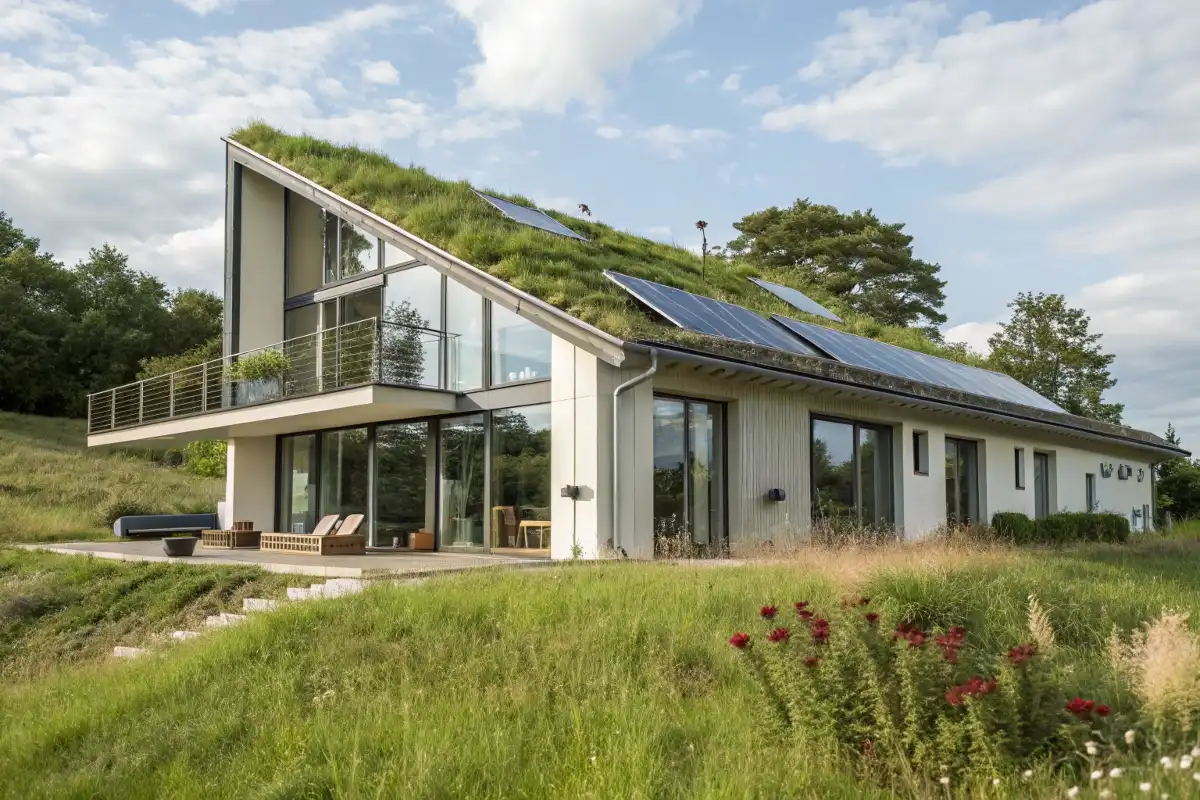
Table of Contents
Why Sustainable Renovations Matter
Every renovation choice can reduce your carbon footprint. For instance, the Passive House Institute has shown that a well-designed, properly insulated home can cut heating and cooling energy needs by 50–90% compared to a typical building. In other words, applying “passive” design principles (like high insulation levels and airtight construction) drastically slashes energy use with minimal mechanical heating/cooling.
Beyond energy, water use and material choices count too. Modern homes are often very wasteful with both water and resources. For example, replacing old high-flow showerheads with WaterSense-certified fixtures can save the average family over 2,700 gallons of water per year. Likewise, choosing sustainable materials (bamboo flooring instead of exotic hardwood, recycled metal framing, etc.) preserves forests and lowers embodied carbon, even if upfront costs are a bit higher.
The economic case is strong as well. Eco-friendly homes typically save 20–30% on energy bills compared to conventional homes. Over a decade, those savings often outweigh the extra investment. In fact, LEED-certified green homes in the U.S. have documented $1.2 billion in energy savings and $149.5 million in water savings nationally. Home values go up too: green-certified homes sell faster and often at a premium (3–10% higher) compared to similar non-green homes. In short, green renovations pay off.
Finally, think about comfort and health. Better insulation and windows keep indoor temperatures steady year-round, and reduce outdoor noise by up to 30–50%. Using low-VOC (volatile organic compound) paints, adhesives, and woods significantly improves indoor air quality – studies show this can reduce respiratory irritation and allergy symptoms for sensitive individuals. True HEPA filters will remove ≥99.97% of airborne particles (pollen, dust, mold spores). In short, sustainable upgrades mean fewer drafts and allergens, quieter rooms, and a healthier home for your family.
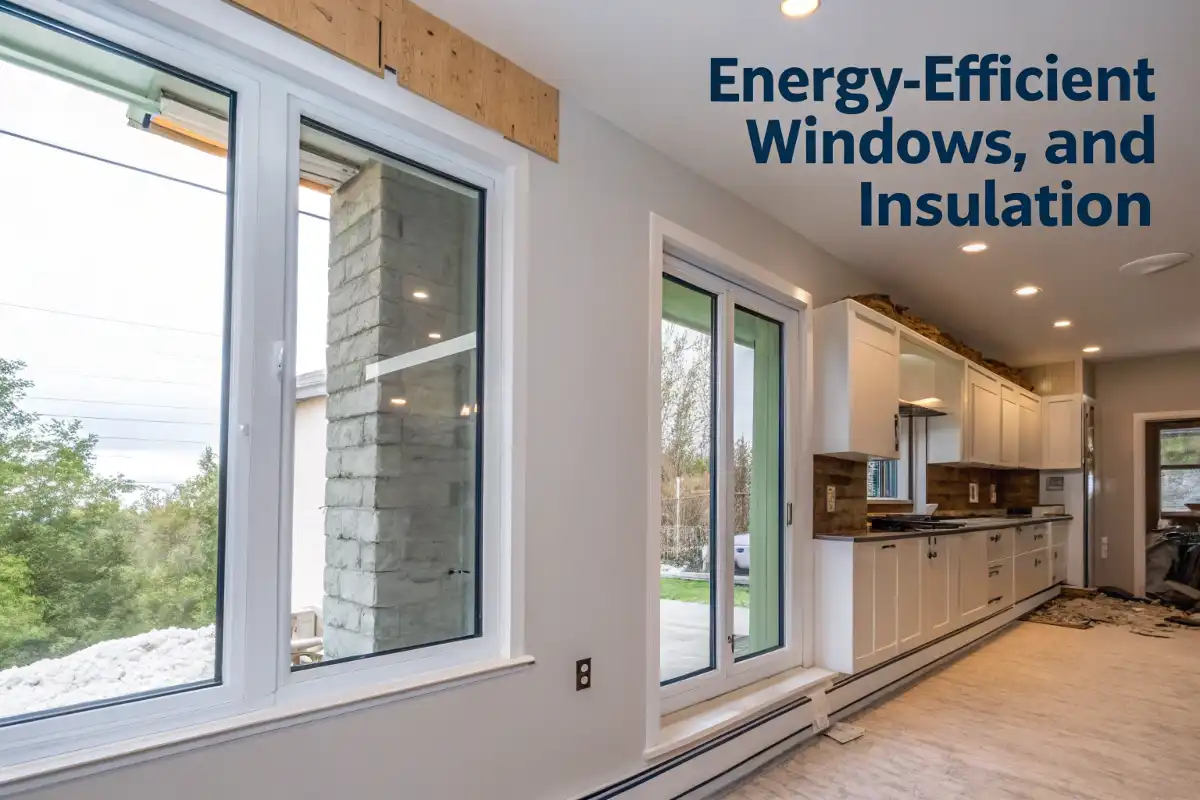
Key Areas for Sustainable Upgrades
Energy Efficiency: The Foundation of Green Remodeling
Energy-efficient upgrades often offer the fastest payback. Start by addressing lighting, insulation, windows, and heating/cooling systems.
- LED Lighting & Smart Controls: Modern LED bulbs use about 75–90% less energy than old incandescent bulbs. Not only do they use less power, they last many times longer (10–25×). Replace all high-use lights with LED fixtures and smart bulbs. Adding occupancy sensors or daylight dimmers can cut lighting usage another ~30%. For example, sensors in garages or basements turn lights off when no one is around, while daylight harvesting dims lights on sunny days. Over time, these steps dramatically shrink your electric bill.
- Better Insulation & Air Sealing: Proper insulation is a “silent workhorse” of green renovations. Filling attics, walls, and floors with high-performance insulation can cut heating/cooling needs by roughly 15–30% (or even more). Every gap in your home’s envelope leaks conditioned air: an Energy Star estimate is that sealing and insulating can save ~15% on a home’s heating and cooling. Use materials like cellulose (recycled newspaper) or dense-packed fiberglass: they’re highly effective and some (like cellulose) even sequester carbon. Also seal all cracks, ducts, and outlets to reduce air leakage. Together, extra insulation and sealing can make a huge dent in year-round energy use.
- High-Performance Windows: Old single-pane windows are an energy sink. Upgrading to double or triple-glazed windows with low-emissivity (Low-E) coatings and argon gas fill can reduce heat loss by up to 50% compared to single-pane glass. In cold climates, south-facing windows with good Low-E glass also admit winter sun to warm your home naturally. In hot climates, spectrally selective coatings block solar heat (reducing cooling needs by ~30–40%). Proper installation is key – even the best windows must be sealed well. Taken together, efficient windows can cut your heating and cooling costs by nearly 30% or more.
- Heating, Ventilation & Air-Conditioning (HVAC): If your furnace or air conditioner is more than 10–15 years old, consider replacing it with a high-efficiency heat pump. Modern electric heat pumps (especially cold-climate models) can heat and cool using half the energy of older systems. Look for a SEER (cooling efficiency) rating of 16+ or a HSPF (heating efficiency) of 9+. In many U.S. areas, a high-efficiency heat pump is far cheaper to run than natural gas. Don’t forget thermostats – a smart thermostat can trim HVAC run time by 10–15% by adapting to your schedule.
- Solar Power & Storage: Solar panels have come way down in cost (roughly 64% cheaper since 2010 for residential systems). Installing solar PV on your roof can dramatically cut your electricity bills. A typical 6–7 kW home solar array (roughly 15–20 panels) can offset on the order of 5–7 metric tons of CO₂ per year – about the same carbon uptake as 150–180 mature trees. That’s renewable power for your home at virtually no fuel cost. If your home gets plenty of sun, you might pay back the panel cost in 8–12 years (after which the electricity is essentially free). Battery storage is also more affordable than before: adding a battery can boost solar self-consumption to around 60–80%, letting you use stored power at night. Between tax credits and zero-energy mortgages, many homeowners now finance solar upgrades through utility savings.
A rooftop solar panel installation. Solar power, now ~30% cheaper (via tax credits), can offset ~5–7 tons of CO₂ per year for a typical system.
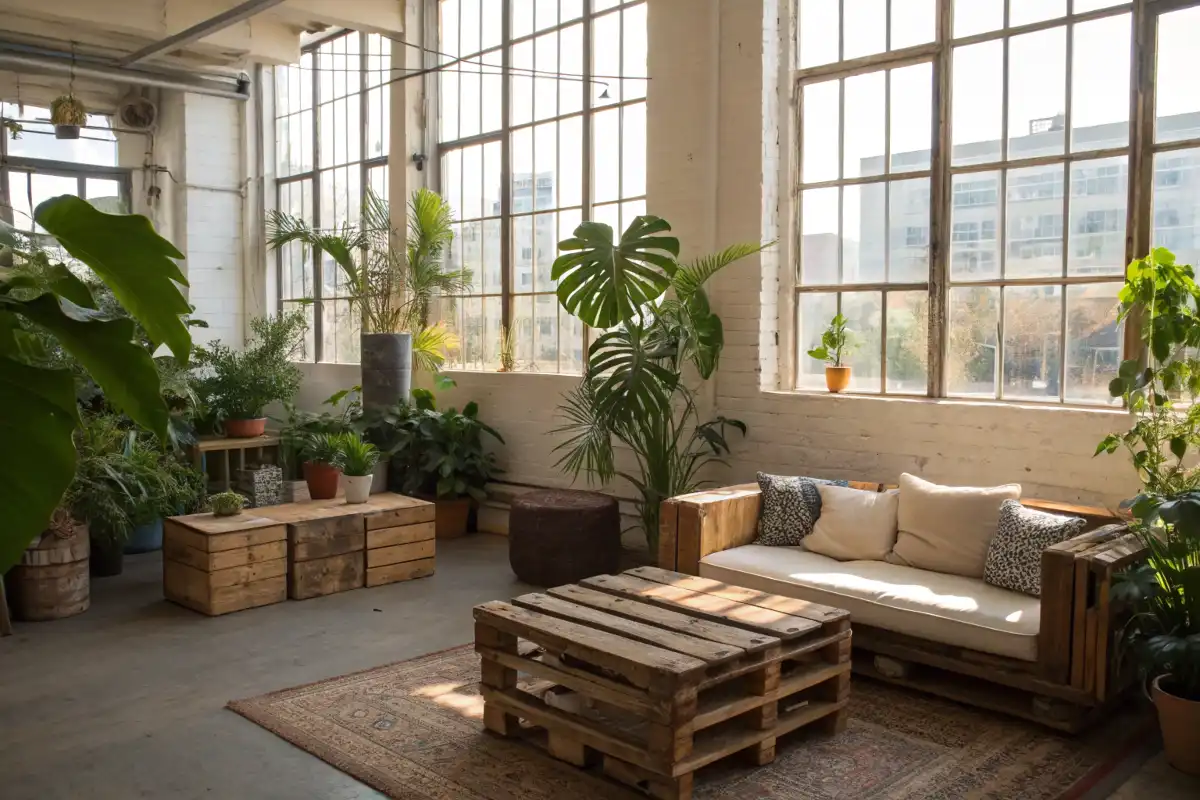
Water Conservation: Every Drop Counts
Conserving water is both eco-friendly and often cost-effective. Kitchens, bathrooms, and irrigation are prime targets: (Kitchen backsplash options)
- Low-Flow Fixtures: Simply swapping in Water Sense-certified toilets, faucets, and showerheads can cut indoor water use by 20–60%. For example, old toilets often use 3.5–7 gallons per flush; modern high-efficiency toilets use only 1.28 gallons. Just this swap can save a family thousands of gallons a year. Likewise, efficient showerheads (≤2.0 gpm) can save about 2,700 gallons per year per household without any loss in comfort. Faucets and aerators also cut flow by ~30%, with hardly noticeable difference for everyday use.
- Greywater & Reuse: Consider a simple greywater system to reuse gentle wastewater (from showers or laundry) for yard irrigation. Studies find properly installed greywater systems can supply ~50% of a home’s outdoor watering needs, slashing potable water use. Even without plumbing hacks, using rain barrels and mulching gardens goes a long way.
- Smart Irrigation: If you have a lawn or garden, a smart irrigation controller is a small investment with big payoff. These controllers use weather forecasts and soil moisture sensors to only water when needed. Such systems can save up to 15,000 gallons per year per home in many U.S. climates. That means a quarter to a third less water used watering your lawn – again, without you having to remember to turn off the sprinklers on rainy days.
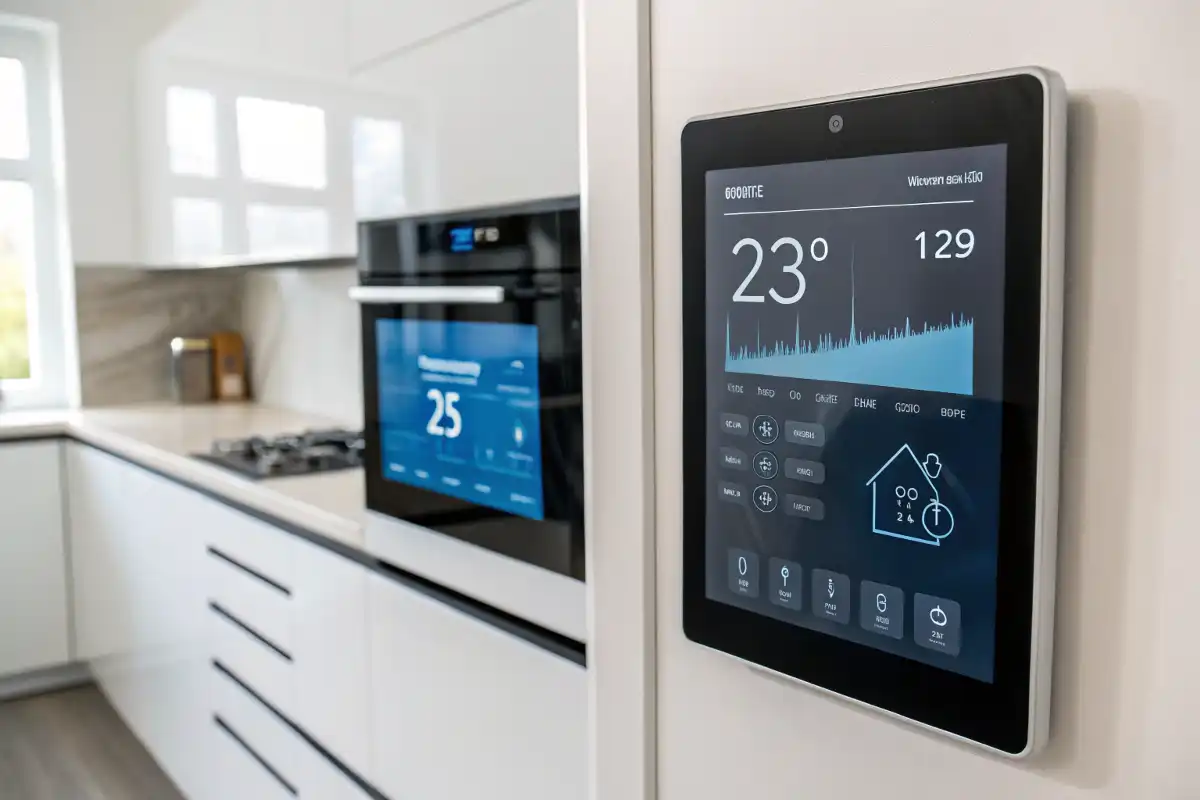
Sustainable Building Materials: The Heart of Eco-Renovation
Choosing low-impact materials is essential. Sustainable materials often cost a bit more upfront but save energy, waste, and money over time. Here are key examples:
- Bamboo: Bamboo floors and cabinetry are gorgeous and renewable. Bamboo plants grow 5–10× faster than oak or maple forests, and can be harvested in 5–7 years instead of decades. Remarkably, studies show a bamboo plantation can sequester ~70% more carbon per acre than a hardwood forest. So, every bamboo countertop or floor you install is like planting a tiny bamboo forest.
- Cork: Cork comes from the bark of the cork oak tree, which isn’t cut down to harvest it. Instead, the bark is peeled off every 9 years and the tree keeps growing. This makes cork 100% renewable and biodegradable. Cork flooring or wall panels provide natural insulation and a soft feel underfoot. Plus, as the tree regrows bark, it actually absorbs up to 5× more CO₂ than usual. Using cork helps forests and reduces landfill waste.
- Reclaimed Wood: Old-growth lumber is often more durable and beautiful than new mill wood, and using reclaimed wood (from barns, factories, or decommissioned buildings) saves trees and energy. Reclaimed wood comes from already-processed timber, so its “embodied energy” is much lower – you skip the logging, milling, and shipping for new lumber. It also has a unique character: reclaimed beams, doors, and floors bring history and warmth to a space. Structurally, real “heartwood” from old trees is typically denser and better-weathered. Even better, when reclaimed wood eventually reaches end-of-life, it can be reused again or used as biomass, instead of ending up in a landfill.
- Recycled Metal: Metal materials (like steel or aluminum) can be recycled virtually endlessly. For example, recycling aluminum uses 95% less energy than making it from scratch. If your renovation calls for metal roofing, beams, or siding, look for post-consumer recycled content. You might pay a few percent more upfront, but you’ll save enormous carbon from avoided mining and smelting.
- Hempcrete: Hempcrete (hemp hurd + lime binder) is a modern eco-wall material. It’s actually carbon-negative: the growing hemp plant absorbs CO₂, and that carbon stays locked up in the wall as it cures. Estimates show 1 cubic meter of hempcrete can absorb ~165 kg of CO₂ during curing. Hempcrete also offers excellent insulation and moisture control. It’s lighter than traditional concrete and naturally mold-resistant. Using hemp blocks or panels in walls or insulation is like sequestering a little carbon storage in your house.
- Linoleum: Not to be confused with vinyl, true linoleum is made from linseed (flaxseed) oil, pine resin, wood flour, and jute—100% natural, renewable ingredients. It’s a resilient, colorful flooring that can last 25–40 years when installed well. When a linoleum floor finally wears out, it biodegrades (or can be ground and recycled). In kitchens or bathrooms, linoleum is naturally antibacterial and emits no petrochemical fumes. For a classic yet earth-friendly floor, natural linoleum is a great choice.
In general, sustainable materials often have higher upfront costs (perhaps 10–40% more) but save you maintenance and replacement costs down the road. They also tend to last longer: reclaimed hardwood floors can endure 75+ years, hempcrete walls 50+ years, and well-maintained bamboo or cork floors easily 30–50 years. Considering the full life cycle (maintenance, replacement, energy savings), green materials usually come out ahead economically. And they bring peace of mind – knowing your renovation isn’t consuming more trees or polluting more than necessary.

Advanced Green Features: Innovation in Action
Once you’ve tackled the basics, consider these next-level upgrades for a truly sustainable home:
- Green (Living) Roofs: A green roof is a layer of vegetation on top of your roof. This “living blanket” provides extra insulation, reduces stormwater runoff, and cools the building naturally. Studies show green roofs can cut a building’s cooling needs by up to 70% and maintain roof temperatures 30°C (≈54°F) cooler than bare roofs on hot days. In cities, many green roofs lower ambient air temperatures by up to 3–5°C, mitigating heat islands. For homeowners, even a modest rooftop garden or sedum mat can shave heating/cooling loads by 10–30%, plus extend the roof’s life by protecting the membrane from weather.
- Induction Cooking: Swap your old gas or coil stove for an induction cooktop. Induction transfers energy directly to the pan via magnetism, so about 90% of the electricity becomes cooking heat – compared to only ~40% for a gas burner (much of the rest heats the air). In practice, this means faster heating (boil water in half the time) and lower kitchen heat waste. Over months, an induction range can cut kitchen energy use by 50–70% relative to gas or old electric. It’s also safer (no open flames) and improves indoor air quality (no combustion byproducts).
An induction cooktop heats a pot quickly and cleanly. Induction cooking delivers ~90% energy efficiency (vs ~40% for gas), making kitchens greener.
Kitchen organization ideas: Eco-friendly Kitchen Organization
- Passive Design Elements: Smart architectural design is a free energy saver. Orienting new or added windows for southern exposure (in cold climates) takes advantage of winter sun to warm the home. Overhangs or awnings can block high summer sun. Using materials with thermal mass (like stone or concrete inside) absorbs daytime heat and releases it at night, cutting HVAC needs. Arranging vents or operable windows for cross-ventilation can cool the home naturally. In fact, combining passive strategies (solar orientation, thermal mass, natural ventilation) can reduce heating/cooling loads by 25–50% without any mechanical upgrades. Even simple steps – painting the roof white (cool roof) or adding shade trees – help passively.
Every sustainable feature, from a green roof to a smartly placed window, contributes to a home that runs cleaner and cheaper.
Benefits of Eco-Friendly Renovations: Beyond Environmental Impact
Cutting Carbon Emissions, Brick by Brick
The environmental payoff of green renovations is tangible. When your home uses less electricity and gas, it directly cuts fossil fuel use and CO₂. For perspective, the U.S. EPA notes saving 10,000 kWh of electricity (about what a typical home uses in a year) avoids about 5–7.5 metric tons of CO₂ – as much as taking 1–2 cars off the road annually. Multiply that across neighborhoods and the difference is huge.
Many deeply renovated eco-homes reduce total carbon footprints by 40–60% or more. Some reach net-zero (total annual energy use met by on-site renewables) – meaning they produce as much clean energy as they consume. These homes exist today. In fact, the Passive House standard shows how far we can go: Passive-certified homes consistently use 80–90% less heating energy than conventional houses. Every efficiency measure, solar panel, or recycled material in your home helps push global building emissions down.
Economic Advantages: Saving Money and Boosting Value
Renovations that cut energy bills quickly pay for themselves. For example, a U.S. Department of Energy study found that adding high-efficiency insulation and heat pumps can yield 15–50% utility savings, often recouping costs in 5–10 years. Broadly, LEED-certified green homes consume 20–30% less energy, translating to $300–$1,000 per year saved on utilities for a typical home (depending on size and climate). Over a decade, that’s thousands of dollars back in your pocket – usually more than the extra you spent on upgrades.
Tax credits and rebates sweeten the deal. For instance, the U.S. federal Residential Clean Energy Credit covers 30% of solar, wind, battery, and other renewable installations. Many states and cities add rebates or tax incentives on top of that, sometimes covering up to 50% of certain upgrade costs. Even mortgages can reward efficiency: programs like Energy Efficient Mortgages let you borrow more at low rates if you’re upgrading your home’s energy performance. Altogether, these incentives often shorten the payback to 5–12 years for a comprehensive reno, after which your savings are almost pure profit.
And don’t forget resale value. Green-certified homes command higher sale prices and faster closings. Recent real estate analyses find energy-efficient homes sell about 3–5% more and move 15–30% faster than similar non-green homes. In competitive markets, a green label (or simply showing upgraded insulation and solar) can set your listing apart.
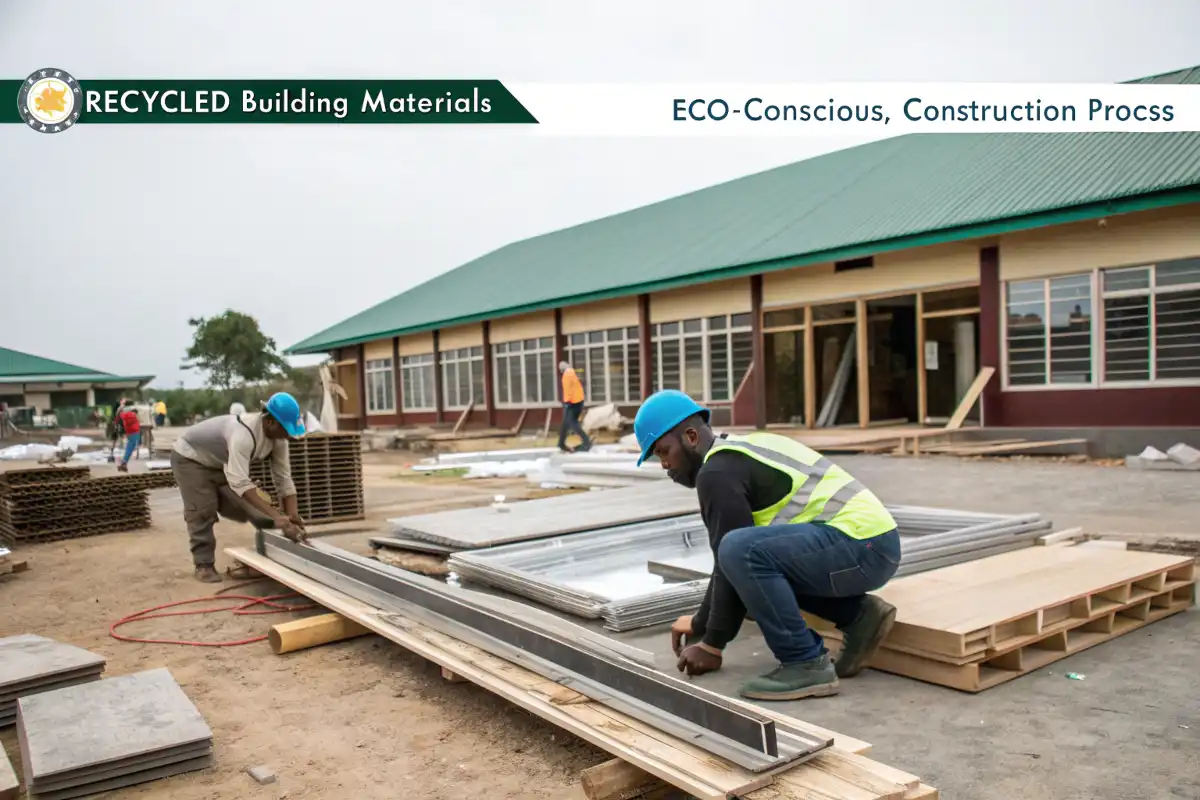
Quality of Life: Health and Comfort Gains
Eco-friendly upgrades make your home nicer to live in. Improved insulation and windows eliminate cold drafts, maintaining even temperatures in every room. The result: fewer icy floors in winter and no hot attic in summer. Better insulation also dampens outside noise by up to 30–50%, so you’ll hear less traffic or neighbors.
Air quality improves too. By choosing low-VOC paints, adhesives, and sealants, and by adding proper ventilation with filters, you drastically cut indoor pollutants. This helps everyone breathe easier – especially kids, the elderly, and allergy sufferers. As Whittaker Systems notes, LEED and green buildings promote fresh indoor air and reduce triggers for asthma and headaches. In practice, families in eco-renovated homes report fewer sniffles and less dust buildup.
A healthier home is directly tied to human health. Studies link poor indoor air to respiratory issues, while upgrades (even just HEPA filtration) can eliminate 99.97% of allergens. Better lighting (more daylighting) can boost mood and circadian rhythms. And natural, nontoxic materials (bamboo, cork, linoleum, etc.) simply make a home feel warm and non-chemical. These comfort and health factors are invaluable — you feel them immediately, as soon as the renovation is done.
Real-World Success: A Seattle Eco-Renovation Case Study
Consider the Chens’ home near Seattle. Built in the 1980s, it was a 2,200 sq. ft. house with single-pane windows, poor insulation, and a drafty heat system. Their annual energy bill was $3,200, and temperatures swung widely between rooms. They worked with a LEED-certified team and went step-by-step:
- Planning (Months 1-4): An energy audit found very high air leakage (5.2 ACH). They got $12,000 in tax credits and rebates up front. They also learned which upgrades would save the most per dollar.
- Energy Upgrades (Months 5-8): They added R-40 cellulose insulation in walls and attic, cutting the leakage to 1.8 ACH. All windows were replaced with high-grade triple-pane Low-E units (U-value ~0.18). The old furnace was replaced by a 16-SEER heat pump with zoned thermostat controls. These steps (costing about $21,500 after incentives) drastically cut energy waste.
- Materials & Water (Months 9-12): They put in FSC-certified bamboo floors and used reclaimed wood for accent trim. All faucets, toilets, and showers were upgraded to Water Sense high-efficiency models, and a simple greywater line now reuses shower water to irrigate the garden.
- Renewables (Months 13-15): Finally, they added a 7.2 kW solar PV array with a home battery and smart energy monitor. Federal tax credits covered 30%, bringing their net install cost to $15,400.
Results: The home’s energy use plummeted from 28,000 kWh/year to just 9,500 kWh/year – a 66% reduction. Annual utility bills fell from $3,200 to about $950, saving $2,250 each year. Water consumption dropped by 45% thanks to the new fixtures and greywater system. Indoor air quality soared: VOC concentrations are 80% lower due to all low-VOC materials and fresh air systems. The home appraised 12% above comparable houses ($78,000 increase). Their total renovation investment (~$62,900 after all incentives) has an expected payback of only 8.2 years through energy/water savings.
Most impressively, the project achieved LEED Platinum status – the highest green rating. USGBC data show that among all certified buildings (not just homes), green projects have now saved $1.2 billion in energy costs and $149.5 million in water costs. The Chens’ story is one example of how a typical home can yield outsized benefits. It also illustrates the modern reality: you don’t need to build a new “dream eco-mansion” from scratch. By prioritizing the right upgrades, any existing home can become a model of sustainability and economy.
For Smart Bedrooms: Smart & Sustainable Bedrooms
Conclusion: A Sustainable Future for Home Renovation
Eco-friendly home renovations are far more than a fad – they’re our best strategy for healthier, more resilient living spaces. Remember: buildings cause nearly 40% of CO₂ emissions, so every retrofit is a chance to do big environmental good. At the same time, green renovations make homes more comfortable, improve air quality, and often increase property value.
The data is clear: investing in efficiency and renewable pays off. Even if you start small – switching to LED lighting, adding insulation, or installing a programmable thermostat – you’ll see real savings and impact. Think of it this way: with energy prices rising and climate impacts growing, the smartest investment is in a smarter, greener home.
As one industry report puts it, green buildings “provide a return on investment, pollute the planet less, and offer health benefits for occupants”. By renovating sustainably, homeowners gain the upside of financial savings and comfort, while contributing to cleaner air and lower carbon emissions for everyone.
Every eco-friendly choice adds up. Whether it’s planting a tree, installing solar panels, or using recycled materials, you’re creating a ripple of positive change. The homes we create today – their design, materials, and efficiency – will shape our environmental legacy for generations. As the science and economics clearly show, the time to make our homes sustainable is now. Start with the highest-impact upgrades, claim those incentives, and watch as your home transforms into a healthier, greener space. We are all part of building a more sustainable future, one renovation at a time.
FAQ
- What is an eco-friendly home?
An eco-friendly home is designed to reduce environmental impact through energy efficiency, sustainable materials, and water conservation. - How can I make my home more sustainable?
You can improve insulation, install solar panels, use energy-efficient appliances, harvest rainwater, and choose non-toxic, recycled building materials. - Are eco-friendly homes more expensive?
Initial costs may be higher, but long-term savings on energy and water bills often offset the investment. - Do solar panels work in cloudy or cold climates?
Yes, solar panels generate electricity even on cloudy days and are often more efficient in cooler temperatures. - What are the benefits of green living at home?
Lower utility bills, improved indoor air quality, reduced carbon footprint, and increased property value. - How does insulation help in an eco-friendly home?
Proper insulation reduces heating and cooling needs, lowering energy consumption and maintaining comfortable indoor temperatures. - Can I retrofit my existing home to be eco-friendly?
Yes, you can upgrade windows, add insulation, install smart thermostats, use low-VOC paints, and switch to sustainable flooring. - What plants are best for indoor air quality?
Snake plant, spider plant, peace lily, and aloe vera are effective at purifying indoor air. - How much water can I save with eco-friendly fixtures?
Low-flow toilets, showerheads, and faucets can reduce household water usage by 20–30%. - What certifications should I look for in green homes?
Look for LEED, ENERGY STAR, or Passive House certifications as indicators of high environmental performance.
